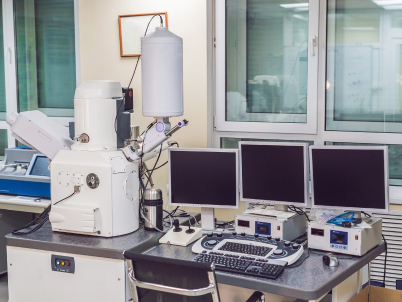Activated Carbon Laboratory Analysis
|
|
|
| |
| At GEE, we provide comprehensive technical consulting and laboratory testing services for all types of activated carbon. Adsorption, a process that involves the adhesion of dissolved substances to the surface of a solid, is a fundamental aspect of activated carbon’s functionality. With its large internal surface up to 1500 m2/g, activated carbon surpasses other materials in its effectiveness for physical adsorption. Activated carbon serves as the ideal solid medium for adsorption, particularly in the removal of soluble organic substances in municipal and waste water treatment applications. To accurately assess its usage, effectiveness and relative advantages in liquid phase applications, a complete experimental evaluation is essential. |
| |
 |
| Porous activated carbon particle provides a large surface area for water treatment applications (Lemley et al.,1995) |
| |
Isotherm Testing
|
| Isotherm testing serves as a crucial method to quantitatively assess the performance of activated carbon, particularly its adsorption ability and capacity. By establishing the relationship between the concentration of adsorbate (e.g. phenol or methylene blue) and the adsorption capacity of the carbon, our specialized equipment and experienced lab experts can generate high-resolution isotherm curves. |
| |
 |
 |
| Adsorption Isotherm (Schneiter & et al.,1985) |
|
| |
Column Testing
|
| Following isotherm testing, column testing is employed to qualitatively evaluate the performance of activated carbon. This testing method involves the use of columns arranged in series and subjected to testing at different linear velocities. Despite its benefits, column testing presents challenges such as back mixing, axial dispersion and wall effects. The data obtained from column testing offers valuable information, including: |
 |
- Utilization of carbon in actual on-site operations
- Minimum contact time necessary for the treatment process
- Pre-treatment requirements
- Depth of mass transfer zone
|
| |
 |
 |
| Column Arrangement for Pilot Testing (Gabelman, 2017) |
|
| |
Physicochemical Properties Characterization
|
| GEE possesses the capability to analyze the physicochemical properties of carbon samples using analytical instrument, including: |
 |
- Scanning Electron Microscope equipped with Energy Dispersive X-ray (SEM-EDX)
- Surface Area Analyzer (BET)
- Thermogravimetric Analyzer (TGA)
- Fourier Transform Infrared Spectrometer (FT-IR)
- X-ray Diffractometer (XRD)
|
| |
 |
 |
| Physicochemical Properties Characterization |
| |
Reference:
|
Gabelman, A. (2017). Adsorption Basics Part 1. American Institute of Chemical Engineers (AlChE).
Retrieved from URL [ 5 January 2021] |
| |
Lemley, A. et al. (1995). Activated Carbon Treatment of Drinking Water. Cornell University Cooperative Extension.
Retrieved from URL [Accessed 5 January 2021] |
| |
Schneiter, R. W., et al. (1985). A Carbon Adsorption Isotherm Test for Volatile Organic Chemicals in Water. Journal (Water Pollution Control Federation), vol. 57, no. 5, 1985, pp. 403–405.
Retrieved from URL [Accessed 5 Jan. 2021] |
|
| |
|
|
|